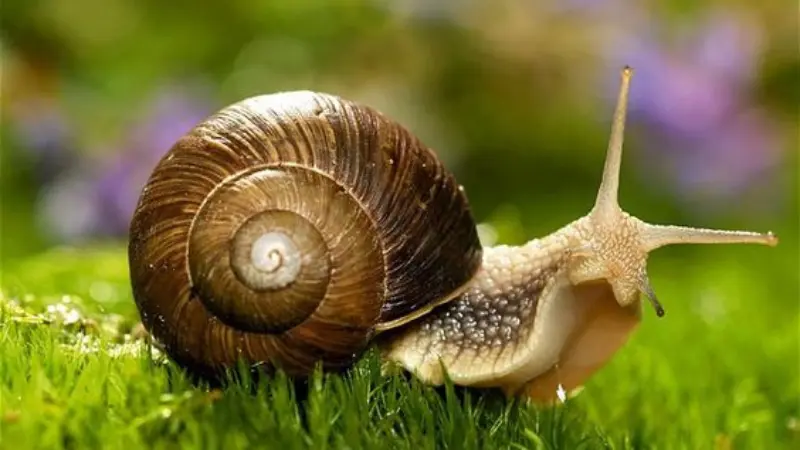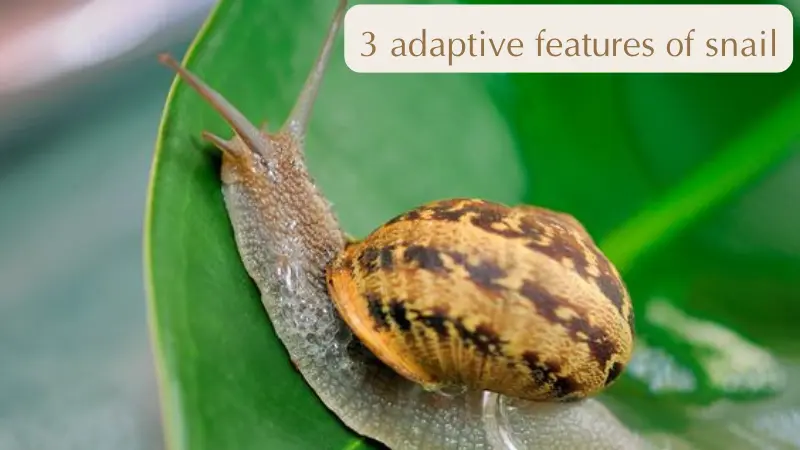Snails are remarkable creatures that have captivated the curiosity of scientists and nature enthusiasts alike. These mollusks, found in a variety of environments worldwide, possess unique adaptations that allow them to thrive in diverse habitats. Understanding these adaptive features not only highlights the ingenuity of nature but also underscores the critical roles snails play in their ecosystems. This article delves into 3 adaptive features of snails: their shells, locomotion mechanisms involving their feet and mucus, and their sensory systems.
3 adaptive features of snail: The most details
The Protective Shell
One of the most distinctive and vital adaptive features of snails is their shell. The shell, typically coiled and robust, serves several critical functions that enhance a snail’s chances of survival.
The shell is primarily composed of calcium carbonate, providing a hard and durable exterior. This rigid structure protects the snail’s soft body from predators, harsh environmental conditions, and physical damage. The coiled design of the shell allows the snail to retract its body fully inside, further safeguarding it from threats. This ability to retreat into a protective casing is a significant evolutionary advantage, offering an effective defense mechanism against various dangers.
In terrestrial environments, the shell helps snails retain moisture, crucial for their survival, as they are prone to desiccation. In aquatic habitats, the shell aids in buoyancy and protection against water currents. Additionally, the coloration and patterning of shells can serve as camouflage, blending snails into their surroundings and making it harder for predators to spot them.
Locomotion and Mucus
Another fascinating adaptive feature of snails is their locomotion, facilitated by their muscular foot and the secretion of mucus.
The snail’s foot is a broad, flat muscle located on the underside of its body. Movement is achieved through a series of muscle contractions that create wave-like motions, propelling the snail forward. This type of locomotion, known as pedal waves, is slow but highly effective for the snail’s needs, allowing it to navigate various surfaces and terrains.

Mucus plays an integral role in snail locomotion. Secreted by glands located in the foot, mucus reduces friction, allowing snails to glide smoothly over surfaces, including rough and sharp objects that would otherwise cause injury. Additionally, the mucus acts as an adhesive, enabling snails to climb vertical surfaces and even move upside down.
Beyond aiding in movement, mucus provides several other benefits. It helps snails retain moisture, crucial for their survival in dry conditions. The mucus also has antimicrobial properties, protecting snails from harmful pathogens and parasites. Furthermore, some species produce toxic or distasteful mucus, deterring predators and adding an extra layer of defense.
Sensory Systems
The sensory systems of snails are highly adapted to their environments, allowing them to effectively find food, avoid predators, and navigate their surroundings.
- Eyes and Vision: Snails have simple eyes located at the tips of their tentacles, or in some species, at the base of shorter tentacles. These eyes are not highly developed and mainly detect changes in light intensity rather than detailed images.
- Tentacles and Tactile Sensing: The tentacles, particularly the longer pair, are essential sensory organs. They are highly sensitive to touch and chemical cues, enabling snails to explore their environment and locate food. The shorter pair of tentacles, or lower tentacles, often function as chemosensory organs, detecting chemical signals in the environment. This ability to sense chemicals helps snails find food sources, identify potential mates, and recognize the presence of predators.
- Adaptive Responses: These sensory adaptations are crucial for survival. For instance, snails can detect chemical cues from predators in their mucus trails, allowing them to take evasive action. They can also use their chemosensory abilities to track down food, such as decaying plant matter, fungi, or algae.
Conclusion
In summary, snails exhibit a fascinating array of 3 adaptive features of snails that enable them to thrive in various environments.
These adaptations highlight the remarkable ingenuity of evolution and the intricate ways in which snails have adapted to their environments. Understanding these features not only deepens our appreciation for these humble creatures but also underscores the importance of preserving their habitats and the delicate balance of ecosystems in which they play a vital role. Exploring the world of snails offers a glimpse into the wonders of nature and the incredible diversity of life on our planet.


